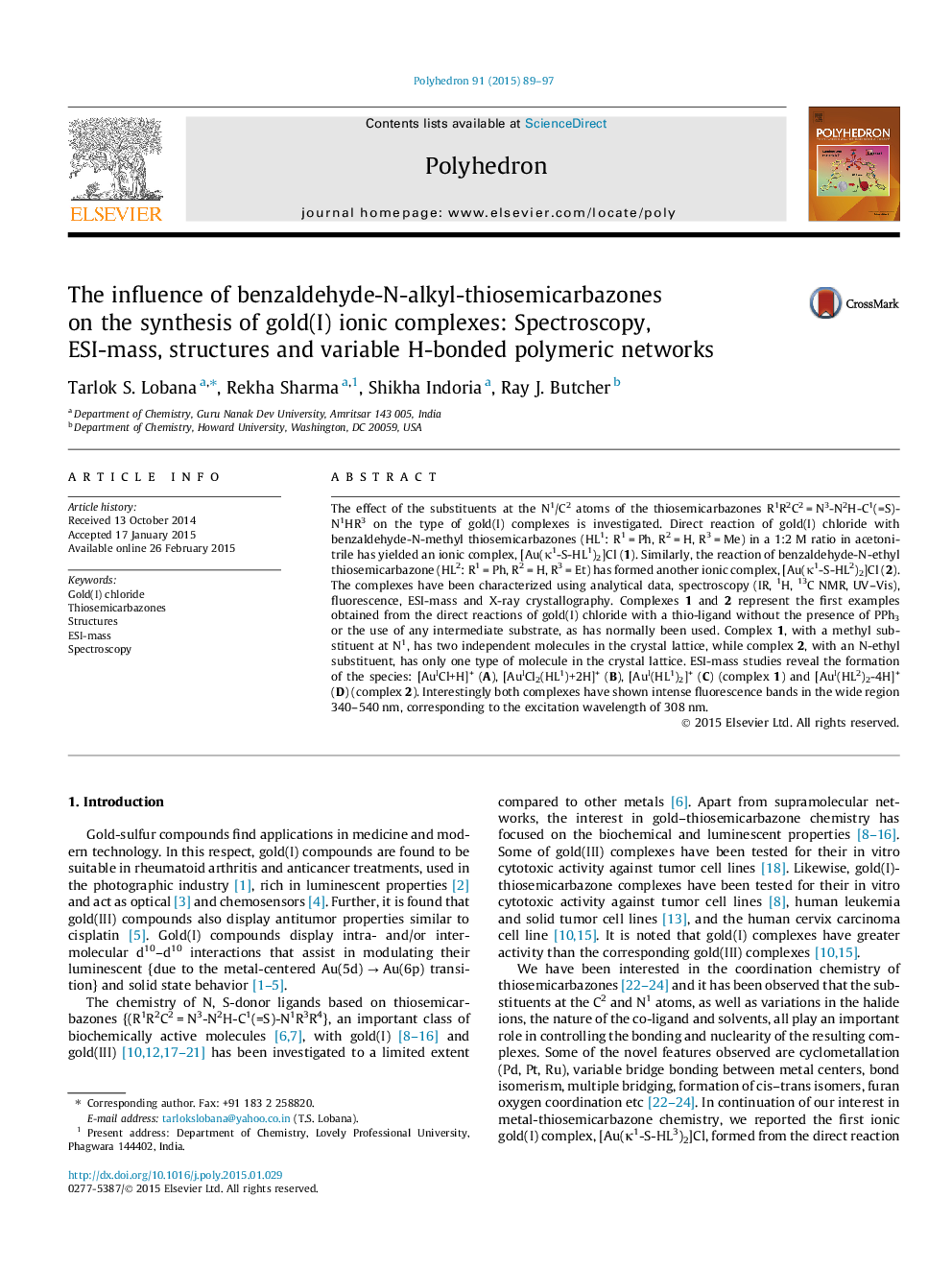| کد مقاله | کد نشریه | سال انتشار | مقاله انگلیسی | نسخه تمام متن |
|---|---|---|---|---|
| 1335231 | 1500248 | 2015 | 9 صفحه PDF | دانلود رایگان |

The effect of the substituents at the N1/C2 atoms of the thiosemicarbazones R1R2C2 = N3-N2H-C1(=S)-N1HR3 on the type of gold(I) complexes is investigated. Direct reaction of gold(I) chloride with benzaldehyde-N-methyl thiosemicarbazones (HL1: R1 = Ph, R2 = H, R3 = Me) in a 1:2 M ratio in acetonitrile has yielded an ionic complex, [Au(κ1-S-HL1)2]Cl (1). Similarly, the reaction of benzaldehyde-N-ethyl thiosemicarbazone (HL2: R1 = Ph, R2 = H, R3 = Et) has formed another ionic complex, [Au(κ1-S-HL2)2]Cl (2). The complexes have been characterized using analytical data, spectroscopy (IR, 1H, 13C NMR, UV–Vis), fluorescence, ESI-mass and X-ray crystallography. Complexes 1 and 2 represent the first examples obtained from the direct reactions of gold(I) chloride with a thio-ligand without the presence of PPh3 or the use of any intermediate substrate, as has normally been used. Complex 1, with a methyl substituent at N1, has two independent molecules in the crystal lattice, while complex 2, with an N-ethyl substituent, has only one type of molecule in the crystal lattice. ESI-mass studies reveal the formation of the species: [AuICl+H]+ (A), [AuICl2(HL1)+2H]+ (B), [AuI(HL1)2]+ (C) (complex 1) and [AuI(HL2)2-4H]+ (D) (complex 2). Interestingly both complexes have shown intense fluorescence bands in the wide region 340–540 nm, corresponding to the excitation wavelength of 308 nm.
The direct reaction of gold(I) chloride with benzaldehyde-N-alkyl thiosemicarbazones in acetonitrile has yielded two coordinate ionic complexes, [Au((κ1-S-HL1)2]Cl (1) (N1-Me) and [Au((κ1-S-HL2)2]Cl (2) (N1-Et). Complex 1 has two independent molecules in the crystal lattice while complex 2 has only one type of molecule in the crystal lattice. Both complexes show intense fluorescence bands in the wide region 340–540 nm corresponding to an excitation wavelength of 308 nm.Figure optionsDownload as PowerPoint slide
Journal: Polyhedron - Volume 91, 8 May 2015, Pages 89–97